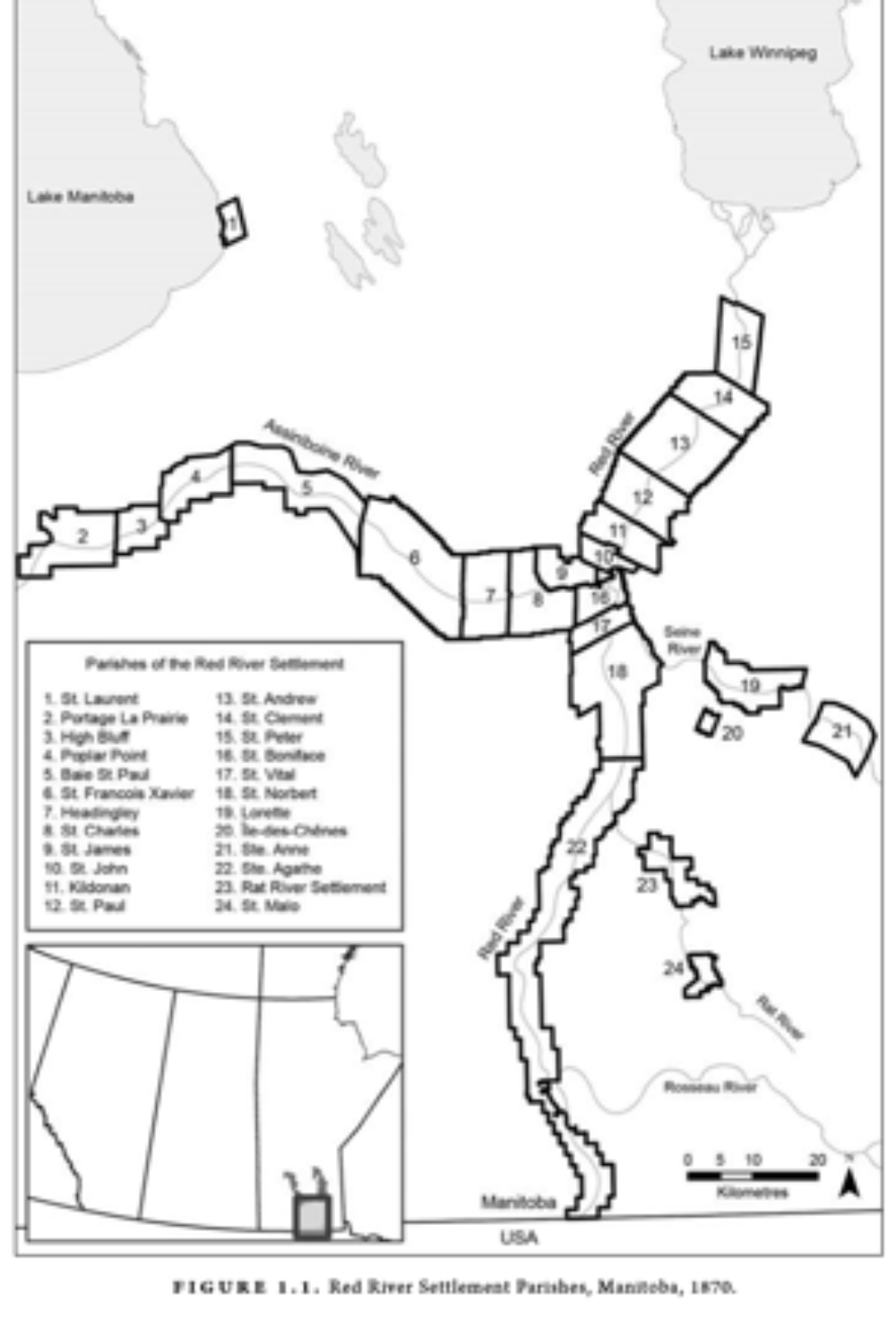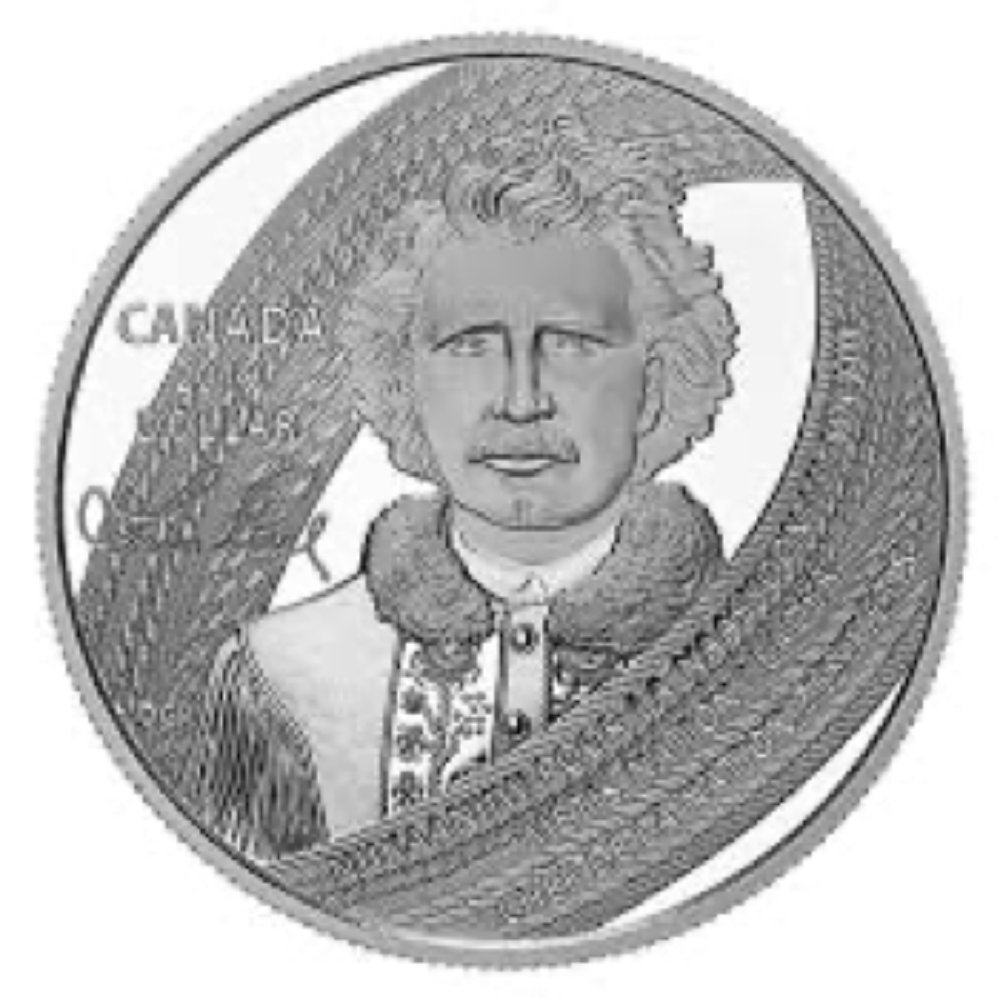In February, Adele Perry asked her HIST 2282: Inventing Canada class at the University of Manitoba to work on a commemoration project after reading Evelyn Peters, Matthew Stock, and Adrian Werner’s Rooster Town: History of an Urban Métis Community, 1901-1969. We will be posting all ten projects over the coming weeks.
Group 6: Bailey, Duncan, Kadie, Moses, Nelson, Riches, Max



Our idea for a Rooster Town commemoration was a silver half dollar minted in Winnipeg with the image of the ∞ symbol inscribed with the names of some of the founding families of Rooster Town.
Some of the names included would be Hogue (Hogg), Morrissette, Berard, Parisien, and others.
On the other side of the coin we imagined the confluence of the Red and Assiniboine Rivers with markers indicating the households of Rooster Town.
It would not have a map of Winnipeg, as we wish the focus to be on the community and not the city.
Alongside the coin, there would be a little piece of cardstock acknowledging the residents of Rooster Town and how they formed their own community in response to their multiple dispossessions due to colonialism, and of the injustices committed to the metis people, but specifically the people of Rooster Town.
Proceeds of the commemorative coin would go towards different metis organizations like the Manitoba Metis Federation.
The coin would also be unveiled at the McNally Robinson at Grant Park Mall as it is geographically close to where Rooster Town was.
Appendix
A. https://en.wikipedia.org/wiki/M%C3%A9tis_flag#/media/File:Metis_Blue.svg
B. (Map similar to this without the parishes). Page 9 from Peters et al. Rooster Town
C. (Commemorative coin example) https://www.mint.ca/store/coins/2019-special-edition-proof-dollar—-louis-riel-father-of-manitoba-prod3580029
About Rooster Town
Melonville. Smokey Hollow. Bannock Town. Fort Tuyau. Little Chicago. Mud Flats. Pumpville. Tintown. La Coulee. These were some of the names given to Métis communities at the edges of urban areas in Manitoba. Rooster Town, which was on the outskirts of southwest Winnipeg, endured from 1901 to 1961.
Those years in Winnipeg were characterized by the twin pressures of depression and inflation, chronic housing shortages, and a spotty social support network. At the city’s edge, Rooster Town grew without city services as rural Métis arrived to participate in the urban economy and build their own houses while keeping Métis culture and community as a central part of their lives.
In other growing settler cities, the Indigenous experience was largely characterized by removal and confinement. But the continuing presence of Métis living and working in the city, and the establishment of Rooster Town itself, made the Winnipeg experience unique.
Rooster Town documents the story of a community rooted in kinship, culture, and historical circumstance, whose residents existed unofficially in the cracks of municipal bureaucracy, while navigating the legacy of settler colonialism and the demands of modernity and urbanization.
Posted by U of M Press
April 28, 2020
Tagged books, colonialism, commemoration, commerating rooster town, community, history, indigenous, manitoba, metis, rooster town, winnipeg
Excerpt from Civilian Internment in Canada Magdalene Redekop: Recommended Reading List
